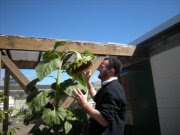Let's say archaeologists find writings from 2700 years ago, were King Josiah and the priests discuss the name of what is going to become their new national hero. They were deciding between John, Samuel, Sebastian and Moshe, (finally decided Moshe) and you can read their opinions were they say they cannot believe that people actually believe what they tell them, etc. An actual proof for an open mind that Torah was invented for political reasons. It is a hypotetical case, that obviously is never going to happen, but I would like to know if you would continue being a rabbi.
I'll make the question slightly stronger, since I never wanted to be a Rabbi in the first place, - 'would you continue being religious?'
++A word to the wise. This is not a question about the validity of the Torah. The question is about what is the basis for my faith. Could my Judaism survive without the Chumash?++
For years I thought the answer to this was a simple 'no'. If the Torah isn't true, then everything that is built on it is also false, and why would I be religious if it wasn't true.
I could never really understand people who keep mitzvot without believing in revelation at Sinai.
But now that I'm actually confronting the question (and perhaps because I am a bit smarter now) I'm not sure. If the question includes certain knowledge that G-d did not give any commandments to the Jews or any system of legislation, or indeed any message, then I still think I would pack it in tomorrow. In the words of one of my Rabbinical colleagues 'We could be playing glam rock in Maddison Square Gardens'. Perhaps not! but you get the point.
On the other hand, if the question asks us to imagine that the Torah as we have it is not an authentic document, but it is based on traditions, customs and beliefs going back a millenia before Josiah, I think I would still be 'in'.
I'll try to explain why (though I'm not entirely sure myself). Perhaps the best analogy is to the Zohar. Many scholars and Rabbis held (and hold) that the Zohar is a forgery compiled by Moshe de Leon over a thousand years after it was allegedly written. R' Yaakov Emden wrote a book, Miṭpaḥat Sefarim, proving that the Zohar is a forgery. Yet he also wrote several kabbalistic works and commentaries on sections of the Zohar. He used kabbalah in his halachic works and commentaries. How could he hold that it is a forgery, and at the same time consider it authentic? (I know one could argue that he only claimed the Zohar was a forgery because of the threat of Sabbateanism, but I don't think it is possible to prove so convincingly that it is not genuine unless he really believed what he wrote, and I also tend to assume that people write what they think is true).
Perhaps the answer is that the beauty of the Zohar and the kabbalistic system is not dependent on the authority and accuracy of the text, but is a self contained system which works. It can be an expression of the Divine Will if it was written by Moshe de Leon just as much as if it was written by R' Shimon bar Yochai.
I'm not trying to show whether this Zohar is authentic or not, just giving an example that even if it is not genuine, it can still provide a basis for faith.
Perhaps the same could be true for the Torah. Even though I'm convinced that it is true, I think my faith could survive even if it were not. As long as I felt it was an expression of the Divine Will. As long as I can believe in G-d, and as long as the system works, I think I would still be religious.
Perhaps this kind of belief is 'cutting the saplings' which was Acher's heresy in the Talmud Chagiga. Perhaps it is heretical to say that Judaism could survive without the Torah.
On the other hand, none of our halachah comes directly from the Chumash. Our Halachah is from the Talmud through the eyes of the poskim. I think the Talmud could stand without the Torah. The derashot may be 'reverse engineering' anyway (according to 'Doros Rishonim' for example). And (with a few exceptions) Yeshivas certainly don't seem to spend much time, or have much interest, in learning Chumash and Nach. They know full well that Judaism is about Talmud and Shulchan Aruch, not Bible.
So, as of today, I think I would still be religious, even were the Torah to be proven to be a forgery.
I'm open to other opinions, and I reserve the right to change my mind. But after a week of thinking about this issue, these were my thoughts so far.
Over to you, my readers.
